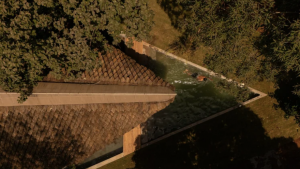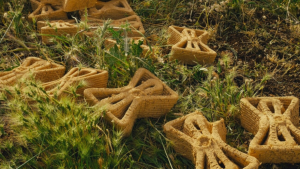First Published in

Vastu Shastra is composed of two words: vastu, which refers to the place where humans dwell, and shastra, which means science. In other words, Vastu Shastra is the science that deals with human dwellings.
This rich Indian body of knowledge which is recorded in the Vedas (ancient Hindu scriptures) was formulated thousands of years ago by sages who figured out how design and architecture could benefit man.
A practitioner of Vastu Shastra learns how to create buildings that harness the positive energy of the five elements, or panchbhootas (air, water, earth, sky and sun), to bring about an equilibrium between man and nature.
Vastu Shastra advises on everything related to building – from the topo-graphy of the land where the home is to be constructed, to the positioning of rooms right through to the general interior design of the house.
As a practice, it also requires a comprehensive understanding of the eight directions: north, south, east, west and their combinations.
Vastu Shastra deems the construction of a space without proper observation of the rules as potentially dangerous: certain accidents, cal-am-ities and illnesses are believed to occur if a place is incorrectly built.
Vastu dosh, which refers to negative effects caused by the absence of proper Vastu Shastra planning, can be remedied to an extent. For example, the use of yantras, a mystical diagram or bronze talisman, can improve the negative energy that may have resulted from the incorrect positioning of rooms or other such factors. Yantras are often buried in the ground.
Increasingly, Vastu Shastra has been ignored in favour of aesthetics and the appeal of modern comforts. As big cities and urban spaces grow, the contemporary challenge to build a house, or even a flat, according to Vastu Shastra is becoming harder. In fact, some practitioners believe that the principles of Vastu Shastra are not applicable to apartments as each dwelling should be separate from the other by a reasonable distance, to ensure uninterrupted flow of air and plenty of light.
Vastu Uncle (Kunapareddy Arunkumar) is by day the director of a regional newspaper in Andhra Pradesh, a state in India's south. He is also a Vastu Shastra expert and has been advising people on how to construct buildings according to Vastu Shastra since 1987.
Indian Vastu Shastra advises on everything to do with building a home, from buying a plot of land to the incremental design details of the home decor. Here are some of the basic rules to maximise one’s happiness, prosperity and health.
Land
A Vastu Shastra expert should be consulted before any land, house or flat purchase is made. If his advice were sought once construction had started, the potential risks would already be in place.
Land should never be purchased from people who are insolvent or have suffered from mental illness. Similarly, sites that were donated to temples or have no title deed should not be bought.
The topography is important: a plot of land with boulders, wormhills, anthills, buried skeletons and bones should not be bought. If the soil is crumbly rock, then money will come your way.
The direction that the plot of land faces is also important and different directions benefit different kinds of people – east is good for professors, scholars and priests, west for people who support society, north for government officials and south for business-minded people.
Garden
After purchasing land, keeping a cow and her calf there will make it more auspicious.
Trees should be planted at this stage – a Tulsi (holy basil) is a must. All thorny plants except rose bushes should be uprooted as they have a negative energy. The best trees to plant are: coconut, lemon, almond, pomegranate, mango and sandalwood.
Construction should not stop once it is started and builders should work through the day and stop at sunset. Only new materials should be used as those from a previous building could cause negative incidents from that home to be repeated.
The compound wall and gate should be built before the house is constructed. There should be two gates so that anything evil that enters from one gate, will exit from the other.
If a car is parked facing west or northwest, the owner will spend a long time travelling.
House
Houses should ideally be built on the southwest section of the land.
Balconies and verandas should be positioned on the north or northeast sides of the house, and never on the south.
Furniture, such as sofas, should be placed in the southeast, south or west sides of a room.
Torn clothing and withered flowers should be avoided as they prevent the goddess of wealth, Lakshmi, from entering.
Pictures depicting nudes, fighting animals, captured elephants, hunting scenes, trees without fruits or flowers, snakes, owls, bats, vultures and pigeons should not be hung in the house.
The kitchen should ideally be in the southeast corner of the house and the walls should be painted yellow, rose, red, orange or chocolate brown.
The living room should be on the north side of the house. Furniture should be square or rectangular, not round or oval and the best colours for the walls are: white, yellow, green or blue and never red or black.
The main bedroom should be on the southwest or northwest side of the house. Bedrooms on the northeast side of the house will cause trouble and newly married couples should not use a bedroom on the east side. The walls should be painted a light rose, dark blue, dark green or gray, and some Vastu Shastra authorities say that the walls should not be painted white or a light yellow.
One should sleep in their own house with their head to the east or south, visitors should sleep with their head to the west. One should never sleep with their head to the north. Upon rising from bed, the right foot should be placed on the floor first as it is equated with wealth.
Money, valuables or a safe should be stored in a room on the north side of the house. This is the side of Kubera, the god of wealth. The walls should be painted yellow as it leads to an increase of wealth.
The dining room should be located on the west side of the house, or on the east or north side of the building.
Bathrooms can be on the west or northwest sides of the house, but never on the east or northeast. Morning sunlight on the body while bathing is good for a person, so bathroom windows should be set in the north or east sides of the room. The walls should be painted white, sky blue or any light shade. Do not use black or dark red.
It is best to build stairways on the southwest of the house or, if necessary, on the south or west sides of the house. Do not build a staircase on the northeast side, as it will cause a loss of wealth and, for the same reason, there should not be an even number of steps.
Vastu Shastra is composed of two words: vastu, which refers to the place where humans dwell, and shastra, which means science. In other words, Vastu Shastra is the science that deals with human dwellings.
This rich Indian body of knowledge which is recorded in the Vedas (ancient Hindu scriptures) was formulated thousands of years ago by sages who figured out how design and architecture could benefit man.
A practitioner of Vastu Shastra learns how to create buildings that harness the positive energy of the five elements, or panchbhootas (air, water, earth, sky and sun), to bring about an equilibrium between man and nature.
Vastu Shastra advises on everything related to building – from the topo-graphy of the land where the home is to be constructed, to the positioning of rooms right through to the general interior design of the house.
As a practice, it also requires a comprehensive understanding of the eight directions: north, south, east, west and their combinations.
Vastu Shastra deems the construction of a space without proper observation of the rules as potentially dangerous: certain accidents, cal-am-ities and illnesses are believed to occur if a place is incorrectly built.
Vastu dosh, which refers to negative effects caused by the absence of proper Vastu Shastra planning, can be remedied to an extent. For example, the use of yantras, a mystical diagram or bronze talisman, can improve the negative energy that may have resulted from the incorrect positioning of rooms or other such factors. Yantras are often buried in the ground.
Increasingly, Vastu Shastra has been ignored in favour of aesthetics and the appeal of modern comforts. As big cities and urban spaces grow, the contemporary challenge to build a house, or even a flat, according to Vastu Shastra is becoming harder. In fact, some practitioners believe that the principles of Vastu Shastra are not applicable to apartments as each dwelling should be separate from the other by a reasonable distance, to ensure uninterrupted flow of air and plenty of light.
Vastu Uncle (Kunapareddy Arunkumar) is by day the director of a regional newspaper in Andhra Pradesh, a state in India's south. He is also a Vastu Shastra expert and has been advising people on how to construct buildings according to Vastu Shastra since 1987.
Indian Vastu Shastra advises on everything to do with building a home, from buying a plot of land to the incremental design details of the home decor. Here are some of the basic rules to maximise one’s happiness, prosperity and health.
Land
A Vastu Shastra expert should be consulted before any land, house or flat purchase is made. If his advice were sought once construction had started, the potential risks would already be in place.
Land should never be purchased from people who are insolvent or have suffered from mental illness. Similarly, sites that were donated to temples or have no title deed should not be bought.
The topography is important: a plot of land with boulders, wormhills, anthills, buried skeletons and bones should not be bought. If the soil is crumbly rock, then money will come your way.
The direction that the plot of land faces is also important and different directions benefit different kinds of people – east is good for professors, scholars and priests, west for people who support society, north for government officials and south for business-minded people.
Garden
After purchasing land, keeping a cow and her calf there will make it more auspicious.
Trees should be planted at this stage – a Tulsi (holy basil) is a must. All thorny plants except rose bushes should be uprooted as they have a negative energy. The best trees to plant are: coconut, lemon, almond, pomegranate, mango and sandalwood.
Construction should not stop once it is started and builders should work through the day and stop at sunset. Only new materials should be used as those from a previous building could cause negative incidents from that home to be repeated.
The compound wall and gate should be built before the house is constructed. There should be two gates so that anything evil that enters from one gate, will exit from the other.
If a car is parked facing west or northwest, the owner will spend a long time travelling.
House
Houses should ideally be built on the southwest section of the land.
Balconies and verandas should be positioned on the north or northeast sides of the house, and never on the south.
Furniture, such as sofas, should be placed in the southeast, south or west sides of a room.
Torn clothing and withered flowers should be avoided as they prevent the goddess of wealth, Lakshmi, from entering.
Pictures depicting nudes, fighting animals, captured elephants, hunting scenes, trees without fruits or flowers, snakes, owls, bats, vultures and pigeons should not be hung in the house.
The kitchen should ideally be in the southeast corner of the house and the walls should be painted yellow, rose, red, orange or chocolate brown.
The living room should be on the north side of the house. Furniture should be square or rectangular, not round or oval and the best colours for the walls are: white, yellow, green or blue and never red or black.
The main bedroom should be on the southwest or northwest side of the house. Bedrooms on the northeast side of the house will cause trouble and newly married couples should not use a bedroom on the east side. The walls should be painted a light rose, dark blue, dark green or gray, and some Vastu Shastra authorities say that the walls should not be painted white or a light yellow.
One should sleep in their own house with their head to the east or south, visitors should sleep with their head to the west. One should never sleep with their head to the north. Upon rising from bed, the right foot should be placed on the floor first as it is equated with wealth.
Money, valuables or a safe should be stored in a room on the north side of the house. This is the side of Kubera, the god of wealth. The walls should be painted yellow as it leads to an increase of wealth.
The dining room should be located on the west side of the house, or on the east or north side of the building.
Bathrooms can be on the west or northwest sides of the house, but never on the east or northeast. Morning sunlight on the body while bathing is good for a person, so bathroom windows should be set in the north or east sides of the room. The walls should be painted white, sky blue or any light shade. Do not use black or dark red.
It is best to build stairways on the southwest of the house or, if necessary, on the south or west sides of the house. Do not build a staircase on the northeast side, as it will cause a loss of wealth and, for the same reason, there should not be an even number of steps.






